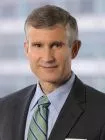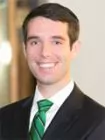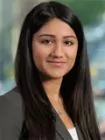The U.S. Supreme Court and the U.S. Court of Appeals for the Federal Circuit wrestled with a number of important issues of patent law in 2016, including in three Supreme Court opinions (with more on the way) and three en banc Federal Circuit opinions. The issues in these cases were diverse and wide-ranging, including administrative review of patents in the U.S. Patent and Trademark Office ("PTO") and the International Trade Commission ("ITC"), recognition of a new patent agent privilege, and the Supreme Court's first design patent decision in more than a century.
This White Paper summarizes and explains some of the most significant patent law cases of 2016. Each of these cases provides important precedent for patent practitioners.
DEFENSES—ON-SALE BAR AND PATENT EXHAUSTION
The Medicines Co. v. Hospira, Inc., 827 F. 3d 1363 (Fed. Cir. 2016) (en banc)—On-Sale Bar
In Medicines Co., a unanimous Federal Circuit, sitting en banc, clarified two aspects of the 35 U.S.C. § 102(b) on-sale bar that are particularly significant to patentees who utilize third-party contract manufacturing. 1 First, the court held that, in general, the on-sale bar does not apply where there has been no transfer of title. 2 Second, the court held that merely "stockpiling" a product will not trigger the on-sale bar. 3
Medicines Co. arose under the Hatch-Waxman Act, but its holding is not limited to pharmaceutical cases. The plaintiff (Medicines Co. or "MedCo") held product and product-by-process patents covering Angiomax®, an anti-clotting drug used during heart surgery. 4 The defendant (Hospira) sought to market a generic version of Angiomax®. Hospira argued that the asserted patents were invalid under § 102(b) because MedCo had contracted with a third-party contractor (Ben Venue), and compensated that contractor, to manufacture the drug before the critical date.5 In addressing whether § 102(b) had been triggered, all parties (and the court) agreed that the Supreme Court's test from Pfaff v. Wells Electronics applied: a claimed invention will be invalid if it is both "(1) the subject of a commercial offer for sale[,] and (2) ready for patenting" prior to the critical date. 6 Although Pfaff had focused on the second prong of this test, the Federal Circuit's opinion sought to clarify the application of the "commercial offer" prong, in view of the common "contract manufacturer" business arrangement at issue in the case. The unanimous decision brought some needed clarity to the law and allowed greater flexibility for companies to engage in such common business practices without risking the loss of a patenting opportunity.
First, the court held that the on-sale bar was not triggered by the mere act of contracting with a third-party for manufacturing. Critically, the court noted that the patented invention covered a product, and not the accompanying process that had been used to create the product. 7 In contrast to cases involving method or process patents, the court noted that it had "never espoused the notion that, where the patent is to a product, the performance of the unclaimed process of creating the product, without an accompanying 'commercial sale' of the product itself, triggers the on-sale bar." 8 Additionally, in considering whether a "commercial sale" had taken place, the court relied on the Uniform Commercial Code's ("UCC") definition of "sale": "the passing of title from the seller to the buyer for a price." 9 The court made clear that, although passage of title was not "dispositive[,] the absence of title transfer was significant because, in most instances, that fact indicates an absence of commercial marketing by the inventor." 10 Thus, relying heavily on the absence of title transfer, the court held that the contract manufacturing performed by Ben Venue did not amount to a commercial offer for sale and thus did not trigger the § 102(b) on-sale bar. 11
Second, the court held that mere "stockpiling" of the patented invention did not trigger the on-sale bar. Hospira noted that, by allowing patentees to accumulate their patented products prior to the first offer for sale, patentees were reaping a commercial benefit. 12 "But commercial benefit generally is not what triggers § 102(b); there must be a commercial sale or offer for sale." 13 According to the court, it was well-settled that "preparations" for commercial sales did not trigger the on-sale bar, and that "[s]tockpiling is merely a type of preparation for future commercial sales." 14 Therefore, the court declined to hold that stockpiling of patented products—even when manufactured by third-party contractors—triggered the on-sale bar.
Lexmark International v. Impression Products, 816 F.3d 721 (Fed. Cir.) (en banc), cert. granted, 84 U.S.L.W. 3563 (2016)—Patent Exhaustion
Lexmark involved printer cartridge technology, and it implicated important questions of patent exhaustion. 15 The plaintiff (Lexmark) is a printer cartridge manufacturer that owns several patents covering its cartridge products. It sells its products in two forms: restricted and unrestricted. The "restricted" cartridges—which are available at a lower price—are accompanied by a restriction against reuse or resale, while the "unrestricted" cartridges are not. 16 The defendant (Impression) purchased both restricted and unrestricted Lexmark cartridges from within and outside the United States. 17 When Lexmark charged Impression with infringement, Impression countered that Lexmark's rights had been "exhausted"—meaning that Lexmark's initial sale of the cartridges had exhausted its rights to sue purchasers and later consumers of the cartridges. 18 The questions put before the court en banc were "(a) whether a sale, even though accompanied by a clearly communicated and otherwise-lawful denial of [authority to infringe the patents], nonetheless has the legal effect of conferring such authority and (b) whether a foreign sale has the legal effect of conferring such authority where ... neither a grant nor a reservation of § 271(a) rights was communicated to the purchaser before the foreign sale." 19
In addressing the first question, the Federal Circuit revisited its 1992 decision in Mallinckrodt v. Medipart. 20 In Mallinckrodt, the court had held that a patentee's sale of covered products with restrictions did not exhaust its ability to enforce its patent rights against purchasers that used the products in violation of those restrictions. 21 However, Impression argued that Mallinckrodt had been wrongly decided at the time, and in any event should be abandoned in view of the Supreme Court's more recent decision in Quanta Computer, Inc. v. LG Electronics, Inc. 22
The Federal Circuit disagreed, stating that Quanta did not directly address the issues presented because it did not involve a patentee's restrictions on either its own sales or its licensee's sales. 23 The closer Supreme Court precedent, according to the Federal Circuit, was the 1938 General Talking Pictures case, in which the Court held that a patentee had not exhausted its rights by licensing its patents with a restriction on the licensee's ability to sell the products that the licensee manufactured. 24 Reconciling the defendant's argument with General Talking Pictures would require the court to hold that "exhaustion law embodies a sharp distinction between a sale by a patentee (for which restrictions are to be disregarded) and a sale made by another person authorized by the patentee to sell, i.e., a licensee as in General Talking Pictures (for which a patentee may preserve its § 271 rights by restricting the licensee's authorized sales.)" 25 The court was unwilling to take this leap, especially absent any clear overruling of Mallinckrodt in Quanta. Thus, the court adhered to its longstanding exhaustion principle: "A sale made under a clearly communicated, otherwise-lawful restriction as to post-sale use or resale does not confer on the buyer and a subsequent purchaser the 'authority' to engage in the use or resale that the restriction precludes." 26
The court likewise rested its second holding on its earlier precedent. The 2001 Federal Circuit decision in Jazz Photo held that "the foreign sale of a U.S.-patented article, when the sale is either made or authorized by the U.S. patentee, does not, standing alone, confer on the buyer the 'authority' to import the item into the United States or to sell and use it here, and so does not save those acts from being infringing under § 271(a)." 27 The defendant argued, in part, that Jazz Photo had been abrogated by the Supreme Court's 2015 copyright decision in Kirtsaeng v. John Wiley & Sons, Inc. 28 In that case, the Court held that § 109(a) of the Copyright Act provided that a copy owner is entitled to "sell or otherwise dispose of" that copy, "regardless of the place of manufacture, as long as the maker of the copies had permission from the copyright owner to make them." 29
The Federal Circuit rejected the defendant's arguments, noting that the Supreme Court's decision in the area of copyright law did not address issues of patent law, or specifically patent exhaustion. 30 The court noted that the Kirtsaeng opinion "did not advert to the foreign-exhaustion issue under patent law[, n]or did it cite" or distinguish the Supreme Court's "leading case on exhaustion and foreign sales in the patent area." 31 Moreover, the court noted that Kirtsaeng required analysis of a copyright-specific statute, which "has no counterpart in the Patent Act." 32 The court ultimately determined that the rule of Jazz Photo should be maintained but noted that "[l]oss of U.S. patent rights based on a foreign sale" could still occur as a result of an "express or implied license." 33
Recently, however, the Supreme Court granted Impression's petition for certiorari. 34 Impression's petition presented the following questions:
Whether a "conditional sale" that transfers title to a patented item while specifying post-sale restrictions of the article's use or resale avoids application of the patent exhaustion doctrine and therefore permits the enforcement of such post-sale restrictions through the patent law's infringement remedy.
Whether, in light of this Court's holding in Kirtsaeng v. John Wiley & Sons, Inc., 133 S. Ct. 1351, 1363 (2013), that the common law doctrine barring restraints on alienation that is the basis of exhaustion doctrine "makes no geographical distinctions," a sale of a patented article—authorized by the U.S. patentee—that takes place outside of the United States exhausts the U.S. patent rights in that article. 35
On its present schedule, Lexmark is likely to be fully briefed and argued during the current Supreme Court term. If so, a decision will almost certainly be forthcoming by the end of June 2017.
To read this article in full, please click here.
Footnotes
[1] The Medicines Co. v. Hospira, Inc., 827 F.3d 1363 (Fed. Cir. 2016) (en banc). For additional information, see Jones Day Commentary, " Federal Circuit Decision Clarifies Application of On-sale Bar to Third Party Manufacturers and Suppliers."
[2] Id. at 1375-76.
[3] Id. at 1378.
[4] Id. at 1365-66.
[5] Id. at 1368.
[6] Id. (citing Pfaff v. Wells Electronics, Inc., 525 U.S. 55, 67-68 (1998)).
[7] Id. at 1374. Significantly, the court reiterated that, "[f]or validity purposes, the 'invention' in a product-by-process claim is the product." Id.
[8] Id.
[9] Id. (quoting U.C.C. § 2-106(1)).
[10] Id. at 1376.
[11] Id. at 1376-77. The court also noted that the "confidential nature of the transactions ... weighs against the conclusion that the transactions were commercial in nature." Id. at 1376. The court thereby made clear that its determination depended heavily on the policies behind the on-sale bar: that a patentee should not be able to commercially benefit from placing its patented invention into the marketplace before disclosing that invention to the public via a patent application. Id. at 1376-77.
[12] Id. at 1376-77.
[13] Id. at 1377 (emphasis added).
[14] Id. at 1377-78 (emphasis in original).
[15] Lexmark Int'l, Inc. v. Impression Prods., Inc., 816 F.3d 721 (Fed. Cir. 2016). For additional information, see Jones Day Commentary, " En Banc Federal Circuit Reaffirms that Foreign Sales and Restricted Domestic Sales Don't Exhaust Patent Rights."
[16] Id. at 727-29.
[17] Id. at 728-29.
[18] Id. at 729.
[19] Id. at 734-35.
[20] Id. at 737 (discussing Mallinckrodt, Inc. v. Medipart, Inc., 976 F.2d 700 (Fed. Cir. 1992)).
[21] Id. at 737.
[22] Id. at 731.
[23] Id. at 737-38.
[24] Id. at 744-45.
[25] Id. at 739.
[26] Id. at 735.
[27] Id. at 755.
[28] Kirtsaeng v. John Wiley & Sons, Inc., 133 S. Ct. 1351 (2013)
[29] Id. at 756.
[30] Lexmark, 816 F.3d at 756-60.
[31] Id. at 756.
[32] Id. at 757.
[33] Id. at 773-74.
[34] Lexmark Int'l, Inc. v. Impression Prods., Inc., 816 F.3d 721, 734-35 (Fed. Cir. 2016), cert granted, 84 U.S.L.W. 3563 (Dec. 2, 2016) (No. 15-1189).
[35] Petition for Writ of Certiorari at i, Impression Prods., Inc. v. Lexmark Int'l, Inc. (No. 15-1189).
The content of this article is intended to provide a general guide to the subject matter. Specialist advice should be sought about your specific circumstances.





